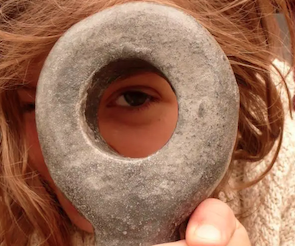https://aporee.org/maps/?loc=47817&m=roadmap
This recording is from the depths of the Amazon rainforest in Brazil, capturing an extremely chaotic scene of wildlife. In this recording the sounds are pretty unknown to myself as I am unfamiliar with the vast amounts of species that live in the Amazon rainforest, however I can distinguish a few sounds that I recognise like crickets chirping. The reason I chose this recording is due to this unfamiliarity that I had to the sounds, they’re clearly non human sounds, however one clear thing stuck out to me, and that is that the noises coming from one animal in particular sounds very similar to a baby fussing.
When, coming across unknown sounds, as humans, we try to relate the sound to something that we do know, something we’re familiar and comfortable with, otherwise our brains find it hard to relax around that sound. The sound coming from this one animal in particular, which I think is some kind of bird, is incredibly intriguing, it is a huge unknown, yet through anthropomorphism I am able to relate it to the everyday sound of a baby crying. Making it now, a sound I am extremely aware of and comfortable with. Through these connections comes an association, we have determined ideas of sound through living with them and making connections to each sound. And so when we connect unknown sounds to known ones, these perceptions come with it, giving us a predetermined judgement of something we are yet to fully know about. For example in this recording, because I have made this connection between the noise of the animal (an assumed bird) and a baby I now view this noise to be a rather innocent one, it is calling to other for attention or just simply trying to interact with the other animals. Because the noise it is making is more like a baby cooing or gurgling, I don’t think of this animal to be in danger or calling for help. Instead it is making noise for another reason, and this allows my brain to relax and be more at ease with the sounds I am hearing. Since looking back at the information provided with the recording, I have realised they are the sounds of Zogzog monkeys, which has now changed my perception on them even more and the relation I had to the baby makes much more sense now. Babies are primal beings, they work on instinct and know what their basic needs are, and so I think from a human’s point of view it is very easy to link babies and monkeys together. Although grown monkeys are incredibly intelligent and aware of their surroundings, much more than babies are. However, because of this distinct separation that both babies and monkeys have from the complexities of our adult human lives in today’s society, we can relate them to each other. As well, we of course are related to monkeys and so this link becomes even stronger, therefore the fact they make a sound similar to babies is less surprising, and again more comforting for us.
In terms of rhythm, this recording has a kind of beat to it, the crickets chirping in the background add this kind of continuum, and an ambience to the recording. The noises of the monkeys are timed evenly apart and follow a distinct rhythm that we can easily become a part of, expecting to know what is coming next. Because of this continuous beat from the monkeys a clear rhythm is established, however around the 3 minute mark these noises start to die down and all that is left are the cricket like noises and some higher pitched bird noises further away. This change in sounds completely shifts the atmosphere from chaotic to calm, with simply the subtraction of one animal’s sounds. From someone who is unfamiliar with the sounds of the rainforest, this change in rhythm allows me to understand very quickly how much the atmosphere in the forest can change, from sound, from weather, from interactions, there is so much differentiated life in this area that one small change can completely shift the dynamic that this forest works with. As someone from a western world, where we are much more out of touch with our roots as human’s, its hard to understand this rapid change in atmosphere as I think it is something that rarely happens here. Things are constantly changing but the dynamic remains similar throughout, there are so many people who live by the same routine everyday that even if something is to happen, there will always be a percentage of people who don’t change and therefore keep this dynamic the same, especially in a city like London. I think for rural towns and villages it is different.
I think overall, the recording of an unknown place can have a huge impact on how you then perceive that place, this is all through relation, and therefore this perception can often be wrong. It is easy to fall into this idea that you think you have a good grasp on a place through it’s sounds, but I have learnt you have to consider both audio and visuals to get an accurate perception of a place.

